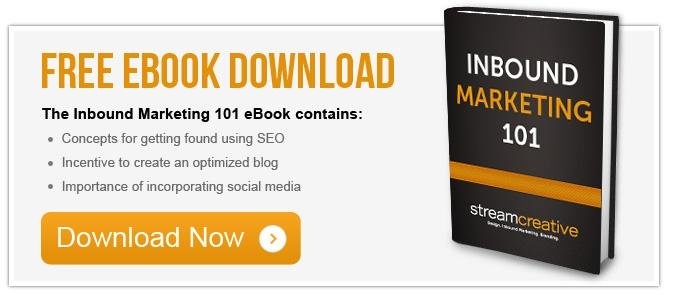The New Year is just around the corner. Have you thought about your New Year’s resolution? Are you going with the traditional: “I’m going to lose weight” or “I’m giving up sweets” or “I’m going to save money” or “I’m going to be more adventurous.” Those are all great resolutions for individuals. But what about for your business? Is your business setting any resolutions for the New Year?
Every business should be setting resolutions, or marketing goals, for the coming new year. This can be a number of different things, such as increasing your marketing qualified leads 20% in one month. Now is the time to think about your goals for next year, which can be done by examining your current data, and comparing results against your goals.
Understand Your Current Data
 Before you can even start setting your new marketing goals, you must analyze your data from the current year. Examine what marketing tactics you executed in 2012, and analyze the results to see what did and did not work – what were the results? Once you’ve analyzed this data, you can start building off of it.
Before you can even start setting your new marketing goals, you must analyze your data from the current year. Examine what marketing tactics you executed in 2012, and analyze the results to see what did and did not work – what were the results? Once you’ve analyzed this data, you can start building off of it.
Set SMART goals – a goal that is specific, measurable, attainable, relevant, and timely. Quantify the goal – what do you want to increase and by how much? Determine your visits and lead goal by setting:
- Average amount of visits to the website per month
- Average lead generation through the website per month
- Number of blogs published per week
- Number of landing pages you will be creating
Remember that timeliness is key. Set the length of time you have and will need to complete the new marketing campaign and achieve the goal.
Use your benchmarks to help you build new goals. Look at the traffic generators on your website – blogs, emails, landing pages, etc. Find the averages from each month and then build new ways to drive and improve traffic through calls-to-action, inbound links, blogs, emails, etc.
Set Your New Goal
After you analyzed your current data, you’re able to see the positive and negative results of your marketing actions. Based off this data, you’re set to make new smart decisions for the coming year. Start by determining what type of goal this is going to be:
- A company/business goal – long-term goals
- A marketing goal – short or long-term goals
- A sales goal – short or long-term goals
Make the goals align and work together in a specific time period. Be smart and logical when setting the timeline. Know what you’ll be able to do within that set timeframe.
Achieve Your New Goal
Establish the marketing campaign framework:
- Research – goals and timeline
- Design – build your assets
- Execute – who is doing what and when
The campaign should hit a particular goal within a particular time. Once the framework is established, the marketing strategy can be built. The marketing strategy outlines the different tactics you will use to get more leads. Consider which assets you will build upon and which will have the highest impact. Some ways to get more leads are:
- Create or assess personas
- Create or assess marketing offers
- Add CTAs to popular pages (or edit current CTAs)
- Build out more blog posts
- Set up an email campaign
- A/B testing of landing pages or CTAs
When making these lead generation decisions, take risks and test your actions. The data you receive will be helpful whether it is good or bad. Overall, focus your assets and content on your audience so that it aligns with your goals.
Review your marketing budget as well. If paid advertising didn’t work this year, don’t repeat it next year. Invest that money elsewhere or save it for a later time. You don’t want to make the same mistake twice.
It’s also important to name your new campaign in a way that shows what you’re focused on – the goal, timeline, and buyer persona.
Tell a Marketing Story
This goes back to the idea of cause and effect. Share the outcome of the new campaign by creating a story for your customers and your marketing and sales team.
- What is the conflict –current marketing activities
- What is the tension – new marketing goals
- What is the climax – executing inbound tactics
- What is the falling action – campaigning
- What is the final resolution – results
Once the story is created and executed, you’ll be able to show the new results. Analyze the conversion rates and sales data, and make a new smart list of the new leads. Basically, show how you met your goal. But, don’t stop there. Always have a next step, something next you’re going to do to continue achieving your goals.
Kick of 2013 with a bang!
- Analyze your 2012 results against your benchmarks and goals.
- Set SMART company and marketing goals for 2013.
- Start creating the new campaign that will be executed to help you reach your 2013 goal.
To help you get started, HubSpot has created a great template that can be used to set goals and timelines for your 2013 marketing campaign.
Have you reviewed your 2012 data? Are you set with your 2013 marketing campaign?




